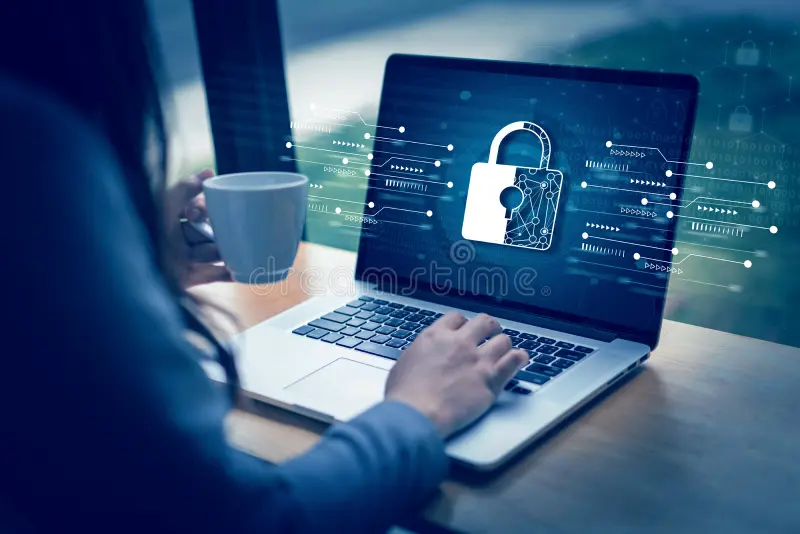Remote work has become a staple in modern businesses, offering flexibility and efficiency. However, it also brings a host of cybersecurity challenges. Ensuring that your remote work environment is secure is crucial for protecting sensitive company data and maintaining business continuity. Here’s how to set up a secure remote work environment for your business:
1. Implement Strong Authentication Methods
Start by securing access to your network and systems. Use multi-factor authentication (MFA) to add an extra layer of protection beyond just usernames and passwords. This requires users to provide additional verification, such as a fingerprint scan or a one-time passcode sent to their phone, making unauthorized access much more difficult.
2. Use a Virtual Private Network (VPN)
A VPN encrypts internet traffic, making it more difficult for cybercriminals to intercept sensitive data. It allows employees to securely connect to the company’s internal network while working remotely. Ensure that your VPN uses strong encryption and is configured properly to prevent leaks and security gaps.
3. Secure Employee Devices
The devices employees use for remote work should be secured to prevent unauthorized access and data breaches. This includes:
- Installing antivirus and endpoint protection software.
- Enabling full disk encryption on laptops and mobile devices.
- Ensuring devices have up-to-date software and security patches.
- Implementing mobile device management (MDM) solutions to remotely monitor and manage devices.
4. Establish Secure File Sharing and Collaboration Tools
When employees are working remotely, secure file sharing and collaboration tools are essential. Avoid using unsecured platforms or personal email for sending sensitive company data. Opt for business-grade, encrypted cloud services like Google Workspace, Microsoft OneDrive, or SharePoint to store and share files securely.
5. Regularly Update Software and Patch Vulnerabilities
Keeping software up-to-date is one of the simplest yet most effective ways to maintain a secure remote work environment. Ensure all devices, applications, and operating systems are regularly updated with the latest security patches. Unpatched software can contain vulnerabilities that hackers can exploit to gain access to your network.
6. Monitor and Control Network Access
Control which users have access to specific systems, applications, and files, especially when employees work remotely. Regularly audit access rights and ensure they align with employees’ roles. Use tools that allow you to monitor network activity for unusual behavior that could indicate a breach.
7. Educate Employees on Cybersecurity Best Practices
Your employees are the first line of defense against cyber threats. Offer regular cybersecurity training to teach them how to identify phishing scams, the importance of strong passwords, and how to handle sensitive data securely. Encourage employees to avoid connecting to public Wi-Fi networks and to use secure home networks for work.
8. Create a Secure Communication Plan
Communication between remote teams must also be secure. Use encrypted messaging services and video conferencing platforms that offer end-to-end encryption. Avoid using unsecured apps or services for sharing business-related information.
9. Backup Data Regularly
Remote work increases the risk of data loss or corruption. Regular backups are essential to ensure that important business data is recoverable in case of an attack or system failure. Implement automated backup solutions to ensure that files are regularly backed up to secure locations, ideally offsite or in the cloud.
10. Develop an Incident Response Plan
In case of a security breach or cyberattack, it’s important to have an incident response plan in place. Ensure that all remote workers know what steps to take if they suspect a breach, including how to report the issue and isolate affected devices. Having a clear and fast response plan minimizes damage and helps contain the threat.
11. Enforce a Strong Password Policy
Require employees to use strong, unique passwords for all company accounts and systems. Implement password managers to help employees securely store and manage their login credentials. Passwords should be at least 12 characters long and include a mix of uppercase letters, numbers, and symbols.
12. Use Cloud-Based Security Tools
Cloud-based security solutions, such as cloud firewalls, endpoint detection and response (EDR), and security information and event management (SIEM), provide comprehensive protection for remote work environments. These tools monitor and secure devices, networks, and data in real-time.
Conclusion
A secure remote work environment is vital to the success and safety of your business. By following these steps—implementing strong authentication, using a VPN, securing devices, educating employees, and adopting cloud security tools—you can significantly reduce the risk of cyber threats. If you need help setting up a secure remote work environment, contact BitNix for expert solutions that protect your business and ensure productivity from anywhere.



